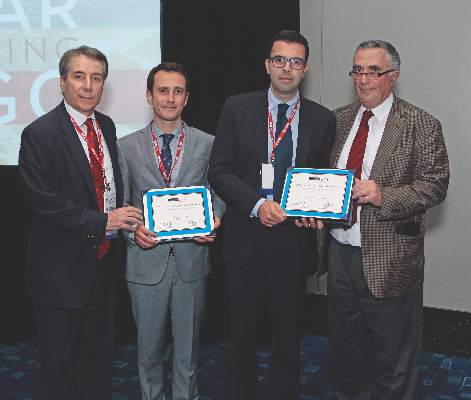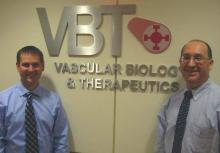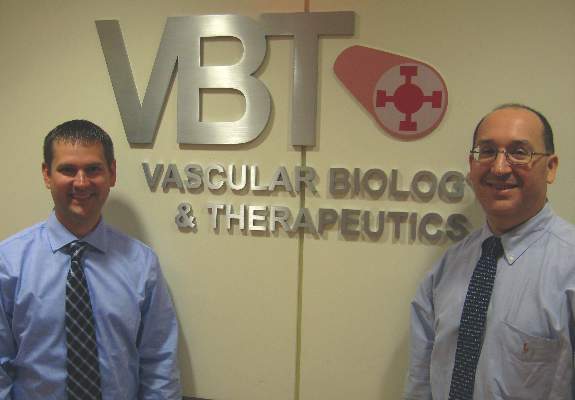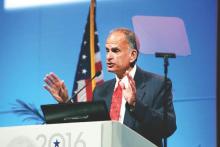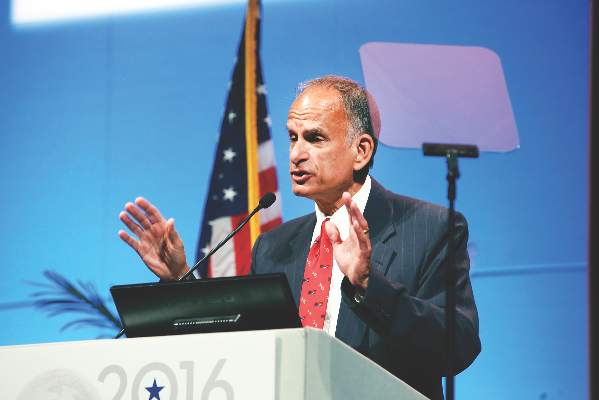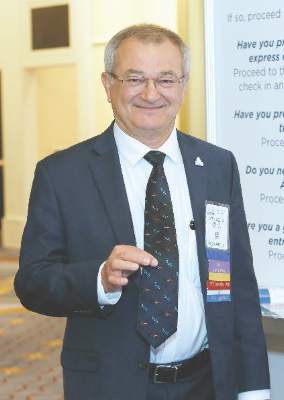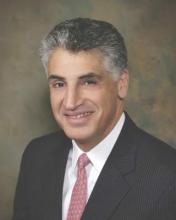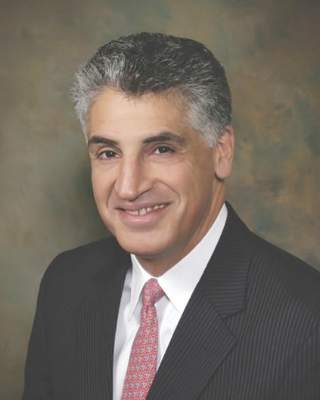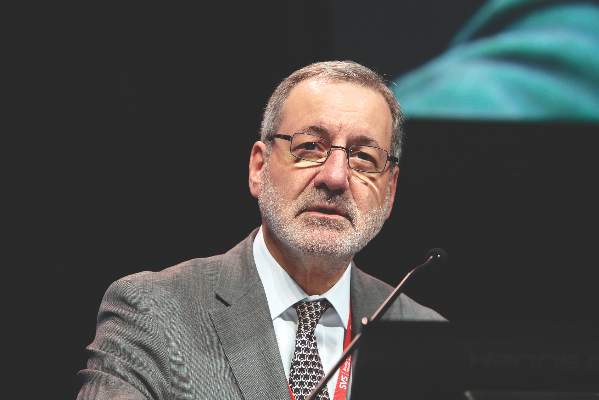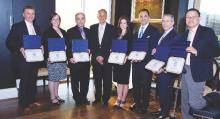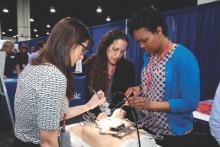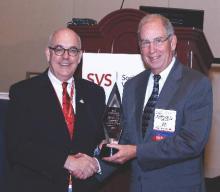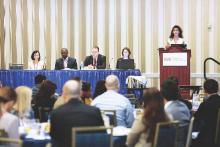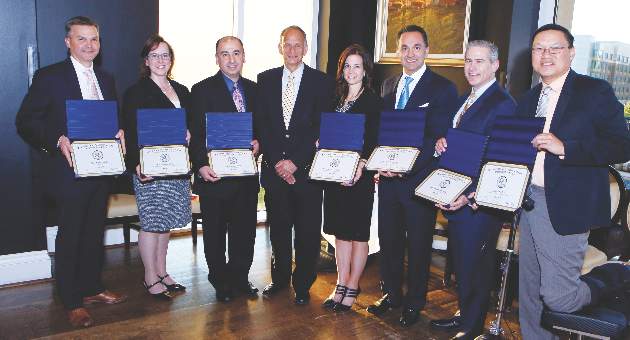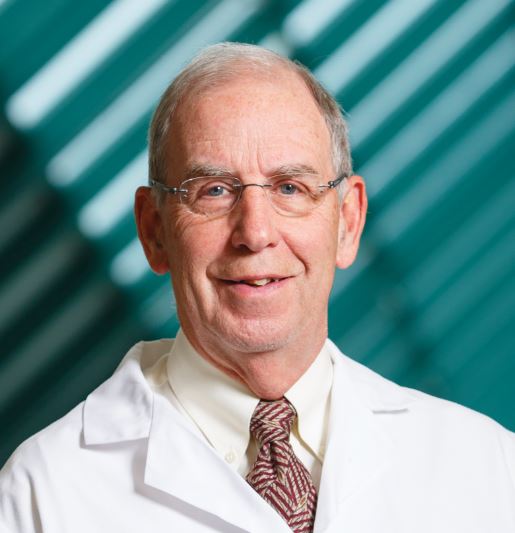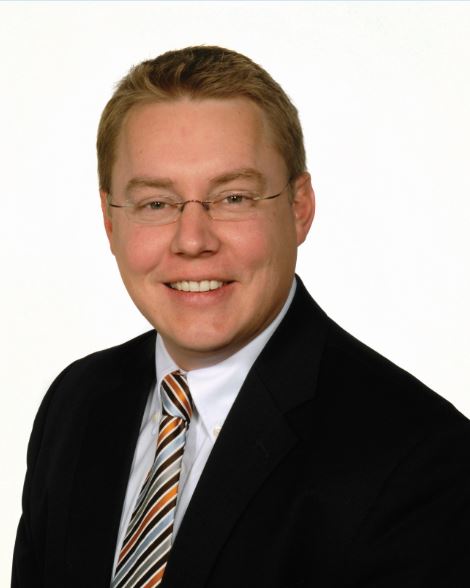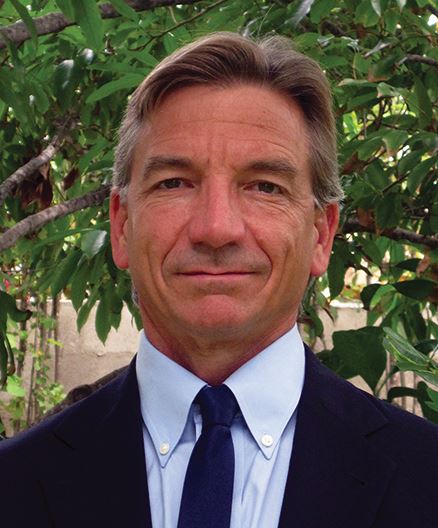User login
Benvenuto, Bienvenue, Velkommen, Willkommen!
Welcome to the Capitol of the USA! More than 100 attendees at the 2016 Vascular Annual Meeting hail from overseas, coming to the nation’s capital from Argentina, China, Japan, the Netherlands, Poland, Sri Lanka, the Ukraine, the United Kingdom and more locales from around the globe.
Many special events for international guests take place Wednesday, including International Fast Talk.
International Fast Talk returns after its popular debut in 2015. It features 22 quick abstract presentations (three minutes) followed by discussion (two minutes). All presentations are scored and the top two scorers will win the event’s Young Surgeon Competition. To qualify for Fast Talk, presenters must be 35 or younger. The abstracts all are available on the meeting app or via the Journal of Vascular Surgery supplement.
International Fast Talk
12:30 – 2:45 p.m., Maryland Ballroom C
Moderators: Drs. Gustav Fraedrich, Kimihiro Komori, Peter F. Lawrence, Luca di Marzo, Gustavo S. Oderich, Kumud M. Rai and Wayne Zhang.
International Forum
3:00 – 6:00 p.m., Maryland Ballroom C
Moderators: Drs. E. Sebastian Debus, Fausto Miranda, Alberto Munoz, Carlo Setacci and Shenming Wang.
This session returns in its expanded three-hour time format. International Forum features 16 abstracts representing research from around the world. International authors have been selected to present their abstract selections, including video abstracts for the first time. Presentations last six minutes with an additional four minutes available for discussion. Only authors outside the United States and Canada may present.
International Reception
6:15 – 7:15 p.m., Maryland Ballroom 1-3
Mix and mingle with friends old and new, and see the International Scholar awards.
SVS vs. ESVS Debates (Friday, June 10)
3:30 – 5:00 p.m., Potomac Ballroom A/B
Moderators: Drs. E. Sebastian Debus, Glenn M. LaMuraglia, Alik Farber, Bruce Perler
“Combatants” take the gloves off during the annual – and always popular – debates between SVS and the European Society for Vascular Surgery. It’s one continent against another, with participants debating the hot topics of the day and scoring thought-provoking points amid witty repartee. The audience chooses the winners! Let the best side of the pond win.
Welcome to the Capitol of the USA! More than 100 attendees at the 2016 Vascular Annual Meeting hail from overseas, coming to the nation’s capital from Argentina, China, Japan, the Netherlands, Poland, Sri Lanka, the Ukraine, the United Kingdom and more locales from around the globe.
Many special events for international guests take place Wednesday, including International Fast Talk.
International Fast Talk returns after its popular debut in 2015. It features 22 quick abstract presentations (three minutes) followed by discussion (two minutes). All presentations are scored and the top two scorers will win the event’s Young Surgeon Competition. To qualify for Fast Talk, presenters must be 35 or younger. The abstracts all are available on the meeting app or via the Journal of Vascular Surgery supplement.
International Fast Talk
12:30 – 2:45 p.m., Maryland Ballroom C
Moderators: Drs. Gustav Fraedrich, Kimihiro Komori, Peter F. Lawrence, Luca di Marzo, Gustavo S. Oderich, Kumud M. Rai and Wayne Zhang.
International Forum
3:00 – 6:00 p.m., Maryland Ballroom C
Moderators: Drs. E. Sebastian Debus, Fausto Miranda, Alberto Munoz, Carlo Setacci and Shenming Wang.
This session returns in its expanded three-hour time format. International Forum features 16 abstracts representing research from around the world. International authors have been selected to present their abstract selections, including video abstracts for the first time. Presentations last six minutes with an additional four minutes available for discussion. Only authors outside the United States and Canada may present.
International Reception
6:15 – 7:15 p.m., Maryland Ballroom 1-3
Mix and mingle with friends old and new, and see the International Scholar awards.
SVS vs. ESVS Debates (Friday, June 10)
3:30 – 5:00 p.m., Potomac Ballroom A/B
Moderators: Drs. E. Sebastian Debus, Glenn M. LaMuraglia, Alik Farber, Bruce Perler
“Combatants” take the gloves off during the annual – and always popular – debates between SVS and the European Society for Vascular Surgery. It’s one continent against another, with participants debating the hot topics of the day and scoring thought-provoking points amid witty repartee. The audience chooses the winners! Let the best side of the pond win.
Welcome to the Capitol of the USA! More than 100 attendees at the 2016 Vascular Annual Meeting hail from overseas, coming to the nation’s capital from Argentina, China, Japan, the Netherlands, Poland, Sri Lanka, the Ukraine, the United Kingdom and more locales from around the globe.
Many special events for international guests take place Wednesday, including International Fast Talk.
International Fast Talk returns after its popular debut in 2015. It features 22 quick abstract presentations (three minutes) followed by discussion (two minutes). All presentations are scored and the top two scorers will win the event’s Young Surgeon Competition. To qualify for Fast Talk, presenters must be 35 or younger. The abstracts all are available on the meeting app or via the Journal of Vascular Surgery supplement.
International Fast Talk
12:30 – 2:45 p.m., Maryland Ballroom C
Moderators: Drs. Gustav Fraedrich, Kimihiro Komori, Peter F. Lawrence, Luca di Marzo, Gustavo S. Oderich, Kumud M. Rai and Wayne Zhang.
International Forum
3:00 – 6:00 p.m., Maryland Ballroom C
Moderators: Drs. E. Sebastian Debus, Fausto Miranda, Alberto Munoz, Carlo Setacci and Shenming Wang.
This session returns in its expanded three-hour time format. International Forum features 16 abstracts representing research from around the world. International authors have been selected to present their abstract selections, including video abstracts for the first time. Presentations last six minutes with an additional four minutes available for discussion. Only authors outside the United States and Canada may present.
International Reception
6:15 – 7:15 p.m., Maryland Ballroom 1-3
Mix and mingle with friends old and new, and see the International Scholar awards.
SVS vs. ESVS Debates (Friday, June 10)
3:30 – 5:00 p.m., Potomac Ballroom A/B
Moderators: Drs. E. Sebastian Debus, Glenn M. LaMuraglia, Alik Farber, Bruce Perler
“Combatants” take the gloves off during the annual – and always popular – debates between SVS and the European Society for Vascular Surgery. It’s one continent against another, with participants debating the hot topics of the day and scoring thought-provoking points amid witty repartee. The audience chooses the winners! Let the best side of the pond win.
Resident Research Prize: Seeking to Preserve AV Fistulae
Even though the use of arteriovenous fistulae (AVF) is considered optimal for hemodialysis access in patients with end-stage renal disease, outcomes for AVF are among the worst for any vascular procedure. Low rates of maturation result in up to 60% of fistulae failing to become suitable for dialysis. This year’s Resident Research Prize winner, Dr. Trenton Foster will report on research that he and his colleagues performed to examine the molecular biology of fistula development with the eventual goal of providing therapeutic targets and strategies to improve AVF maturation.
Working with his mentor, Dr. Alan Dardik, Dr. Foster and his colleagues at the Yale University School of Medicine, have built upon their earlier research showing that Eph (Erythropoietin-producing hepatocellular carcinoma)-B4 activity prevents adaptive remodeling in vein grafts. They hypothosized that Eph-B4 mediates AVF maturation.
Dr. Foster will present their research, which used a mouse model in which an infrarenal aorto-caval AVF was created, as well as a Wistar rat infrarenal patch model.
Human studies using high-resolution imaging have documented venous wall thickening and outward remodeling as consistent components of successful venous remodeling, according to the researchers. Venous remodeling is characterized by increased deposition of smooth muscle cells and changes in extracellular matrix component expression resulting in venous wall thickening and reduced compliance. However, it is not currently understood which aspects of remodeling are critical for successful venous adaptation to the arterial environment, according to Dr. Foster.
In control mice, by day 7, Eph-B4 protein expression increased a significant 2.3-fold in the fistula compared to sham veins. Similarly, venous patch neointimal thickening with a fistula showed a significant 3.8-fold increase in Eph-B4, compared to controls without fistulae. Stimulation of Eph-B4 with Ephrin-B2/Fc showed a sixfold significantly increased colocalization of Eph-B4 and p-Tyr (phosphotyrosine) immunoreactivity by day 21, and significantly reduced fistula diameter and reduced fistula wall thickness, according to Dr. Foster.
“To confirm an inhibitory role for Eph-B4 during AVF maturation, we used Eph-B4 heterozygous mice to determine whether AVF created in mice with less Eph-B4 activity would show altered outward remodeling or wall thickening,” said Dr. Foster. Eph-B4 heterozygous mice showed reduced Eph-B4 expression and AVF in Eph-B4 heterozygous mice had increased fistula wall thickening compared to AVF in wild-type mice, with a corresponding increase in proliferating cells and with no decrease in apoptotic cells. “These data confirm an inhibitory role of Eph-B4 on wall thickening during AVF maturation,” Dr. Foster said.
It is known that Eph-B4 activates the Akt (protein kinase B) pathway to promote cell migration and proliferation. Akt is a regulator of cellular metabolism affecting protein synthesis, cell growth, and promoting cell survival, all of which are essential functions critical to venous remodeling. Dr. Foster and his colleagues previously showed that Akt expression is upregulated during vein graft adaptation, suggesting a role for Akt during AVF maturation.
“Our study shows that Eph-B4 expression increases during AVF maturation and that Eph-B4 activity inhibits venous remodeling through an Akt-1-mediated mechanism. Eph-B4 is normally present in adult veins and may be a potential therapeutic target to reduce pathologic venous remodeling with failure of fistula maturation. These results suggest that strategies to alter Eph-B4 activity may improve AVF maturation,” concluded Dr. Foster and his colleagues.
Even though the use of arteriovenous fistulae (AVF) is considered optimal for hemodialysis access in patients with end-stage renal disease, outcomes for AVF are among the worst for any vascular procedure. Low rates of maturation result in up to 60% of fistulae failing to become suitable for dialysis. This year’s Resident Research Prize winner, Dr. Trenton Foster will report on research that he and his colleagues performed to examine the molecular biology of fistula development with the eventual goal of providing therapeutic targets and strategies to improve AVF maturation.
Working with his mentor, Dr. Alan Dardik, Dr. Foster and his colleagues at the Yale University School of Medicine, have built upon their earlier research showing that Eph (Erythropoietin-producing hepatocellular carcinoma)-B4 activity prevents adaptive remodeling in vein grafts. They hypothosized that Eph-B4 mediates AVF maturation.
Dr. Foster will present their research, which used a mouse model in which an infrarenal aorto-caval AVF was created, as well as a Wistar rat infrarenal patch model.
Human studies using high-resolution imaging have documented venous wall thickening and outward remodeling as consistent components of successful venous remodeling, according to the researchers. Venous remodeling is characterized by increased deposition of smooth muscle cells and changes in extracellular matrix component expression resulting in venous wall thickening and reduced compliance. However, it is not currently understood which aspects of remodeling are critical for successful venous adaptation to the arterial environment, according to Dr. Foster.
In control mice, by day 7, Eph-B4 protein expression increased a significant 2.3-fold in the fistula compared to sham veins. Similarly, venous patch neointimal thickening with a fistula showed a significant 3.8-fold increase in Eph-B4, compared to controls without fistulae. Stimulation of Eph-B4 with Ephrin-B2/Fc showed a sixfold significantly increased colocalization of Eph-B4 and p-Tyr (phosphotyrosine) immunoreactivity by day 21, and significantly reduced fistula diameter and reduced fistula wall thickness, according to Dr. Foster.
“To confirm an inhibitory role for Eph-B4 during AVF maturation, we used Eph-B4 heterozygous mice to determine whether AVF created in mice with less Eph-B4 activity would show altered outward remodeling or wall thickening,” said Dr. Foster. Eph-B4 heterozygous mice showed reduced Eph-B4 expression and AVF in Eph-B4 heterozygous mice had increased fistula wall thickening compared to AVF in wild-type mice, with a corresponding increase in proliferating cells and with no decrease in apoptotic cells. “These data confirm an inhibitory role of Eph-B4 on wall thickening during AVF maturation,” Dr. Foster said.
It is known that Eph-B4 activates the Akt (protein kinase B) pathway to promote cell migration and proliferation. Akt is a regulator of cellular metabolism affecting protein synthesis, cell growth, and promoting cell survival, all of which are essential functions critical to venous remodeling. Dr. Foster and his colleagues previously showed that Akt expression is upregulated during vein graft adaptation, suggesting a role for Akt during AVF maturation.
“Our study shows that Eph-B4 expression increases during AVF maturation and that Eph-B4 activity inhibits venous remodeling through an Akt-1-mediated mechanism. Eph-B4 is normally present in adult veins and may be a potential therapeutic target to reduce pathologic venous remodeling with failure of fistula maturation. These results suggest that strategies to alter Eph-B4 activity may improve AVF maturation,” concluded Dr. Foster and his colleagues.
Even though the use of arteriovenous fistulae (AVF) is considered optimal for hemodialysis access in patients with end-stage renal disease, outcomes for AVF are among the worst for any vascular procedure. Low rates of maturation result in up to 60% of fistulae failing to become suitable for dialysis. This year’s Resident Research Prize winner, Dr. Trenton Foster will report on research that he and his colleagues performed to examine the molecular biology of fistula development with the eventual goal of providing therapeutic targets and strategies to improve AVF maturation.
Working with his mentor, Dr. Alan Dardik, Dr. Foster and his colleagues at the Yale University School of Medicine, have built upon their earlier research showing that Eph (Erythropoietin-producing hepatocellular carcinoma)-B4 activity prevents adaptive remodeling in vein grafts. They hypothosized that Eph-B4 mediates AVF maturation.
Dr. Foster will present their research, which used a mouse model in which an infrarenal aorto-caval AVF was created, as well as a Wistar rat infrarenal patch model.
Human studies using high-resolution imaging have documented venous wall thickening and outward remodeling as consistent components of successful venous remodeling, according to the researchers. Venous remodeling is characterized by increased deposition of smooth muscle cells and changes in extracellular matrix component expression resulting in venous wall thickening and reduced compliance. However, it is not currently understood which aspects of remodeling are critical for successful venous adaptation to the arterial environment, according to Dr. Foster.
In control mice, by day 7, Eph-B4 protein expression increased a significant 2.3-fold in the fistula compared to sham veins. Similarly, venous patch neointimal thickening with a fistula showed a significant 3.8-fold increase in Eph-B4, compared to controls without fistulae. Stimulation of Eph-B4 with Ephrin-B2/Fc showed a sixfold significantly increased colocalization of Eph-B4 and p-Tyr (phosphotyrosine) immunoreactivity by day 21, and significantly reduced fistula diameter and reduced fistula wall thickness, according to Dr. Foster.
“To confirm an inhibitory role for Eph-B4 during AVF maturation, we used Eph-B4 heterozygous mice to determine whether AVF created in mice with less Eph-B4 activity would show altered outward remodeling or wall thickening,” said Dr. Foster. Eph-B4 heterozygous mice showed reduced Eph-B4 expression and AVF in Eph-B4 heterozygous mice had increased fistula wall thickening compared to AVF in wild-type mice, with a corresponding increase in proliferating cells and with no decrease in apoptotic cells. “These data confirm an inhibitory role of Eph-B4 on wall thickening during AVF maturation,” Dr. Foster said.
It is known that Eph-B4 activates the Akt (protein kinase B) pathway to promote cell migration and proliferation. Akt is a regulator of cellular metabolism affecting protein synthesis, cell growth, and promoting cell survival, all of which are essential functions critical to venous remodeling. Dr. Foster and his colleagues previously showed that Akt expression is upregulated during vein graft adaptation, suggesting a role for Akt during AVF maturation.
“Our study shows that Eph-B4 expression increases during AVF maturation and that Eph-B4 activity inhibits venous remodeling through an Akt-1-mediated mechanism. Eph-B4 is normally present in adult veins and may be a potential therapeutic target to reduce pathologic venous remodeling with failure of fistula maturation. These results suggest that strategies to alter Eph-B4 activity may improve AVF maturation,” concluded Dr. Foster and his colleagues.
Presidential Address: ‘We Care!’
“Vascular surgeons are unique in the management of patients with circulatory disease. We are unique because we are exclusively devoted, 100% of our specialty, to the management of patients with vascular disease,” said Dr. Bruce A. Perler in his Presidential Address.
“We are unique in the field of circulatory disease because we’re the only vascular specialists who offer the entire spectrum of treatment options, medical, endovascular and open surgery.... But also, we don’t (just) treat lesions. We take care of patients, and we follow our patients long-term, and we get to know our patients, as people, and we dedicate ourselves to optimizing our patients’ vascular health. This is our brand!”
He described how SVS membership is at more than 5,400, including podiatry partners, cardiologists, radiologists, and other allied health specialists such as PAs and nurses, and more than 700 international members and 10 international chapters.
Dr. Perler stressed how the majority of vascular surgical care in this country today is delivered in the community by private practice vascular surgeons. To support this constituency, SVS established a Community Practice Committee, and this year, despite a tight budget, SVS appropriated $100,000 to fund a strategic plan for the committee.
In addition, SVS’s full-time Washington office is working with CMS and key Congressional leadership to represent the interests of community practitioners and to allow them to succeed in this new world order.
He discussed a number of other highlights of the year as well.
“Our VQI is now certified as a Qualified Clinical Data Registry for meaningful use. In fact ... SVS is the first medical Society to have a government-certified Patient Safety Organization.
“Our PSO and VQI leadership is now collaborating with the FDA and several device manufacturers to capture post-market surveillance data, and we’re tracking the outcomes of vena cava filters and novel endovascular devices ... and our influence is only going to grow!”
The shortage of vascular practitioners is a major concern, and may be made worse by the graying of the surgeon workforce, and accelerated retirement, both voluntary and involuntary, said Dr. Perler, adding that 27% of SVS members are over the age of 60.
Adding to the physician shortage is an inadequate number of training positions. “And while some have suggested that we can utilize nurses and other allied health professionals to compensate for these physician shortages, in fact we’re facing an even greater shortage of nurses and PAs in the near future.” He emphasized that “we need to train more vascular surgeons.”
Among the major surgical specialties, vascular surgery is second only to ophthalmology in annual Medicare spending, Dr. Perler pointed out. This makes vascular surgery a key player in health care system economics.
In fact, “Vascular surgical care specifically will be one of the most significant contributors to hospital margins,” he said.
Dr. Perler pointed out that “this year as President I made it my highest priority to devote the financial and human resources necessary to develop a comprehensive SVS public relations infrastructure to communicate our brand to the key stakeholders: hospital and health care system administrators, payors, the media, and the public.
“We’ve begun with a complete remake of our website, with voluminous new patient-oriented educational material.
“Seventy percent of our website traffic comes from the public seeking medical information. . .And we’re recruiting an SVS member rapid– response team of experts at the national and local levels to be available in real time for news interviews as stories break.
“But we’ll also be proactive in distributing press releases on a regular basis to the media, and we’re going to partner with major national newswires to distribute content to more than 200,000 media points and 10,000 websites.”
Dr. Perler went on to discuss the economics and ethics of many unnecessary procedures being performed today. He stated how this year adherence to the Society’s Code of Ethics is being included in the requirements for membership.
“If approved at our business meeting,” he said, “it will not be enough to do a sufficient number of vascular surgical cases, and do them well, to qualify for membership. If there is credible evidence that comes forward that an applicant for membership has engaged in the performance of inappropriate procedures, or unethical practices, that applicant will be disqualified for membership in our Society.”
On the other hand, he stressed the importance of a strong relationship with industry as exemplified by Dr. Juan Parodi, “who dreamed, and he cared, and believed you could actually repair an aortic aneurysm through incisions in the groin — an idea so preposterous at the time, that the Journal of Vascular Surgery rejected his first case report. Our industry partners believed in this technology, and believed in our specialty, and invested heavily in this technology, and worked with us to continually improve this revolutionary approach to aneurysm repair, as they continue to do today.”
Dr. Perler stressed that appropriate partnership and collaboration with industry is proper and ethical, and critical to improving and saving the lives of patients.
He returned again and again to his theme of caring, that he and fellow vascular surgeons care for and treat the person, not simply a vascular health issue.
“We all belong to a truly exceptional and vibrant specialty, and while our numbers are small, we are unique in the care of patients with circulatory disease, not just because of the totality of care we deliver, not because we’re necessarily better, but much more importantly, because we care; we care deeply about what we do, our patients, and each other,” Dr. Perler said.
“Vascular surgeons are unique in the management of patients with circulatory disease. We are unique because we are exclusively devoted, 100% of our specialty, to the management of patients with vascular disease,” said Dr. Bruce A. Perler in his Presidential Address.
“We are unique in the field of circulatory disease because we’re the only vascular specialists who offer the entire spectrum of treatment options, medical, endovascular and open surgery.... But also, we don’t (just) treat lesions. We take care of patients, and we follow our patients long-term, and we get to know our patients, as people, and we dedicate ourselves to optimizing our patients’ vascular health. This is our brand!”
He described how SVS membership is at more than 5,400, including podiatry partners, cardiologists, radiologists, and other allied health specialists such as PAs and nurses, and more than 700 international members and 10 international chapters.
Dr. Perler stressed how the majority of vascular surgical care in this country today is delivered in the community by private practice vascular surgeons. To support this constituency, SVS established a Community Practice Committee, and this year, despite a tight budget, SVS appropriated $100,000 to fund a strategic plan for the committee.
In addition, SVS’s full-time Washington office is working with CMS and key Congressional leadership to represent the interests of community practitioners and to allow them to succeed in this new world order.
He discussed a number of other highlights of the year as well.
“Our VQI is now certified as a Qualified Clinical Data Registry for meaningful use. In fact ... SVS is the first medical Society to have a government-certified Patient Safety Organization.
“Our PSO and VQI leadership is now collaborating with the FDA and several device manufacturers to capture post-market surveillance data, and we’re tracking the outcomes of vena cava filters and novel endovascular devices ... and our influence is only going to grow!”
The shortage of vascular practitioners is a major concern, and may be made worse by the graying of the surgeon workforce, and accelerated retirement, both voluntary and involuntary, said Dr. Perler, adding that 27% of SVS members are over the age of 60.
Adding to the physician shortage is an inadequate number of training positions. “And while some have suggested that we can utilize nurses and other allied health professionals to compensate for these physician shortages, in fact we’re facing an even greater shortage of nurses and PAs in the near future.” He emphasized that “we need to train more vascular surgeons.”
Among the major surgical specialties, vascular surgery is second only to ophthalmology in annual Medicare spending, Dr. Perler pointed out. This makes vascular surgery a key player in health care system economics.
In fact, “Vascular surgical care specifically will be one of the most significant contributors to hospital margins,” he said.
Dr. Perler pointed out that “this year as President I made it my highest priority to devote the financial and human resources necessary to develop a comprehensive SVS public relations infrastructure to communicate our brand to the key stakeholders: hospital and health care system administrators, payors, the media, and the public.
“We’ve begun with a complete remake of our website, with voluminous new patient-oriented educational material.
“Seventy percent of our website traffic comes from the public seeking medical information. . .And we’re recruiting an SVS member rapid– response team of experts at the national and local levels to be available in real time for news interviews as stories break.
“But we’ll also be proactive in distributing press releases on a regular basis to the media, and we’re going to partner with major national newswires to distribute content to more than 200,000 media points and 10,000 websites.”
Dr. Perler went on to discuss the economics and ethics of many unnecessary procedures being performed today. He stated how this year adherence to the Society’s Code of Ethics is being included in the requirements for membership.
“If approved at our business meeting,” he said, “it will not be enough to do a sufficient number of vascular surgical cases, and do them well, to qualify for membership. If there is credible evidence that comes forward that an applicant for membership has engaged in the performance of inappropriate procedures, or unethical practices, that applicant will be disqualified for membership in our Society.”
On the other hand, he stressed the importance of a strong relationship with industry as exemplified by Dr. Juan Parodi, “who dreamed, and he cared, and believed you could actually repair an aortic aneurysm through incisions in the groin — an idea so preposterous at the time, that the Journal of Vascular Surgery rejected his first case report. Our industry partners believed in this technology, and believed in our specialty, and invested heavily in this technology, and worked with us to continually improve this revolutionary approach to aneurysm repair, as they continue to do today.”
Dr. Perler stressed that appropriate partnership and collaboration with industry is proper and ethical, and critical to improving and saving the lives of patients.
He returned again and again to his theme of caring, that he and fellow vascular surgeons care for and treat the person, not simply a vascular health issue.
“We all belong to a truly exceptional and vibrant specialty, and while our numbers are small, we are unique in the care of patients with circulatory disease, not just because of the totality of care we deliver, not because we’re necessarily better, but much more importantly, because we care; we care deeply about what we do, our patients, and each other,” Dr. Perler said.
“Vascular surgeons are unique in the management of patients with circulatory disease. We are unique because we are exclusively devoted, 100% of our specialty, to the management of patients with vascular disease,” said Dr. Bruce A. Perler in his Presidential Address.
“We are unique in the field of circulatory disease because we’re the only vascular specialists who offer the entire spectrum of treatment options, medical, endovascular and open surgery.... But also, we don’t (just) treat lesions. We take care of patients, and we follow our patients long-term, and we get to know our patients, as people, and we dedicate ourselves to optimizing our patients’ vascular health. This is our brand!”
He described how SVS membership is at more than 5,400, including podiatry partners, cardiologists, radiologists, and other allied health specialists such as PAs and nurses, and more than 700 international members and 10 international chapters.
Dr. Perler stressed how the majority of vascular surgical care in this country today is delivered in the community by private practice vascular surgeons. To support this constituency, SVS established a Community Practice Committee, and this year, despite a tight budget, SVS appropriated $100,000 to fund a strategic plan for the committee.
In addition, SVS’s full-time Washington office is working with CMS and key Congressional leadership to represent the interests of community practitioners and to allow them to succeed in this new world order.
He discussed a number of other highlights of the year as well.
“Our VQI is now certified as a Qualified Clinical Data Registry for meaningful use. In fact ... SVS is the first medical Society to have a government-certified Patient Safety Organization.
“Our PSO and VQI leadership is now collaborating with the FDA and several device manufacturers to capture post-market surveillance data, and we’re tracking the outcomes of vena cava filters and novel endovascular devices ... and our influence is only going to grow!”
The shortage of vascular practitioners is a major concern, and may be made worse by the graying of the surgeon workforce, and accelerated retirement, both voluntary and involuntary, said Dr. Perler, adding that 27% of SVS members are over the age of 60.
Adding to the physician shortage is an inadequate number of training positions. “And while some have suggested that we can utilize nurses and other allied health professionals to compensate for these physician shortages, in fact we’re facing an even greater shortage of nurses and PAs in the near future.” He emphasized that “we need to train more vascular surgeons.”
Among the major surgical specialties, vascular surgery is second only to ophthalmology in annual Medicare spending, Dr. Perler pointed out. This makes vascular surgery a key player in health care system economics.
In fact, “Vascular surgical care specifically will be one of the most significant contributors to hospital margins,” he said.
Dr. Perler pointed out that “this year as President I made it my highest priority to devote the financial and human resources necessary to develop a comprehensive SVS public relations infrastructure to communicate our brand to the key stakeholders: hospital and health care system administrators, payors, the media, and the public.
“We’ve begun with a complete remake of our website, with voluminous new patient-oriented educational material.
“Seventy percent of our website traffic comes from the public seeking medical information. . .And we’re recruiting an SVS member rapid– response team of experts at the national and local levels to be available in real time for news interviews as stories break.
“But we’ll also be proactive in distributing press releases on a regular basis to the media, and we’re going to partner with major national newswires to distribute content to more than 200,000 media points and 10,000 websites.”
Dr. Perler went on to discuss the economics and ethics of many unnecessary procedures being performed today. He stated how this year adherence to the Society’s Code of Ethics is being included in the requirements for membership.
“If approved at our business meeting,” he said, “it will not be enough to do a sufficient number of vascular surgical cases, and do them well, to qualify for membership. If there is credible evidence that comes forward that an applicant for membership has engaged in the performance of inappropriate procedures, or unethical practices, that applicant will be disqualified for membership in our Society.”
On the other hand, he stressed the importance of a strong relationship with industry as exemplified by Dr. Juan Parodi, “who dreamed, and he cared, and believed you could actually repair an aortic aneurysm through incisions in the groin — an idea so preposterous at the time, that the Journal of Vascular Surgery rejected his first case report. Our industry partners believed in this technology, and believed in our specialty, and invested heavily in this technology, and worked with us to continually improve this revolutionary approach to aneurysm repair, as they continue to do today.”
Dr. Perler stressed that appropriate partnership and collaboration with industry is proper and ethical, and critical to improving and saving the lives of patients.
He returned again and again to his theme of caring, that he and fellow vascular surgeons care for and treat the person, not simply a vascular health issue.
“We all belong to a truly exceptional and vibrant specialty, and while our numbers are small, we are unique in the care of patients with circulatory disease, not just because of the totality of care we deliver, not because we’re necessarily better, but much more importantly, because we care; we care deeply about what we do, our patients, and each other,” Dr. Perler said.
Dr. Gloviczki: Of Ties, VAM and a New Challenge
On Wednesday morning, the Society for Vascular Surgery bumped into SVS Past President Dr. Peter Gloviczki. Here’s what we learned about one of our leaders – who is stepping into a new role with the Society – and his participation at VAM this year.
The first thing to note is that he was wearing the very first SVS tie! “It’s the one I designed,” he said.
Dr. Gloviczki is about to start his term, with Dr. Peter Lawrence, as editors-in-chief of the Journal of Vascular Surgery. “We’re very excited,” he said. “We have a new cover and a new format."
The two are expanding the Journal to include much more public media, Dr. Gloviczki said. They have set up a recording studio (National Harbor 1), and after participants give their presentations at VAM, they can record a five-minute video of his or her presentation, Dr. Gloviczki said. When their articles of original research are published, these interviews will be posted online on JVS, SVS and YouTube websites.
As for what he hopes to take from VAM this year: “I’m looking for ideas, for new topics we can include in the Journal. There are differences between European and U.S. colleagues on how to treat vascular disease. I want to learn about that.”
And how many VAMs has he attended? “Almost all of them,” he allowed.
On Wednesday morning, the Society for Vascular Surgery bumped into SVS Past President Dr. Peter Gloviczki. Here’s what we learned about one of our leaders – who is stepping into a new role with the Society – and his participation at VAM this year.
The first thing to note is that he was wearing the very first SVS tie! “It’s the one I designed,” he said.
Dr. Gloviczki is about to start his term, with Dr. Peter Lawrence, as editors-in-chief of the Journal of Vascular Surgery. “We’re very excited,” he said. “We have a new cover and a new format."
The two are expanding the Journal to include much more public media, Dr. Gloviczki said. They have set up a recording studio (National Harbor 1), and after participants give their presentations at VAM, they can record a five-minute video of his or her presentation, Dr. Gloviczki said. When their articles of original research are published, these interviews will be posted online on JVS, SVS and YouTube websites.
As for what he hopes to take from VAM this year: “I’m looking for ideas, for new topics we can include in the Journal. There are differences between European and U.S. colleagues on how to treat vascular disease. I want to learn about that.”
And how many VAMs has he attended? “Almost all of them,” he allowed.
On Wednesday morning, the Society for Vascular Surgery bumped into SVS Past President Dr. Peter Gloviczki. Here’s what we learned about one of our leaders – who is stepping into a new role with the Society – and his participation at VAM this year.
The first thing to note is that he was wearing the very first SVS tie! “It’s the one I designed,” he said.
Dr. Gloviczki is about to start his term, with Dr. Peter Lawrence, as editors-in-chief of the Journal of Vascular Surgery. “We’re very excited,” he said. “We have a new cover and a new format."
The two are expanding the Journal to include much more public media, Dr. Gloviczki said. They have set up a recording studio (National Harbor 1), and after participants give their presentations at VAM, they can record a five-minute video of his or her presentation, Dr. Gloviczki said. When their articles of original research are published, these interviews will be posted online on JVS, SVS and YouTube websites.
As for what he hopes to take from VAM this year: “I’m looking for ideas, for new topics we can include in the Journal. There are differences between European and U.S. colleagues on how to treat vascular disease. I want to learn about that.”
And how many VAMs has he attended? “Almost all of them,” he allowed.
We Must Lead on BEST-CLI Trial, Enroll Patients: Dr. Conte
Dr. Michael Conte issued an urgent call Thursday for vascular surgeons to enroll patients in the BEST-CLI Trial, designed to answer this question: What’s the best treatment for advanced critical limb ischemia?
“This is a key opportunity to define optimal care for patients with critical limb-threatening ischemia,” said Dr. Conte to the audience at the E. Stanley Crawford Critical Issues Forum. “Vascular surgeons are the dominant providers, and we must be the leaders.”
Investigators hope to enroll 2,100 patients; to date the trial is at “barely one-third of that enrollment,” he said.
The National Institutes of Health is closely monitoring the trial, officially the “Best Endovascular vs. Best Surgical Therapy in Patients with Critical Limb Ischemia” trial, he said, adding, “and we must execute on this important opportunity.
“Most importantly, the trial will help us define an evidenced-based standard of care. Vascular surgeons must play a leading role in this landmark trial,” he said.
To participate and learn more, visit: www.bestcli.com.
Dr. Michael Conte issued an urgent call Thursday for vascular surgeons to enroll patients in the BEST-CLI Trial, designed to answer this question: What’s the best treatment for advanced critical limb ischemia?
“This is a key opportunity to define optimal care for patients with critical limb-threatening ischemia,” said Dr. Conte to the audience at the E. Stanley Crawford Critical Issues Forum. “Vascular surgeons are the dominant providers, and we must be the leaders.”
Investigators hope to enroll 2,100 patients; to date the trial is at “barely one-third of that enrollment,” he said.
The National Institutes of Health is closely monitoring the trial, officially the “Best Endovascular vs. Best Surgical Therapy in Patients with Critical Limb Ischemia” trial, he said, adding, “and we must execute on this important opportunity.
“Most importantly, the trial will help us define an evidenced-based standard of care. Vascular surgeons must play a leading role in this landmark trial,” he said.
To participate and learn more, visit: www.bestcli.com.
Dr. Michael Conte issued an urgent call Thursday for vascular surgeons to enroll patients in the BEST-CLI Trial, designed to answer this question: What’s the best treatment for advanced critical limb ischemia?
“This is a key opportunity to define optimal care for patients with critical limb-threatening ischemia,” said Dr. Conte to the audience at the E. Stanley Crawford Critical Issues Forum. “Vascular surgeons are the dominant providers, and we must be the leaders.”
Investigators hope to enroll 2,100 patients; to date the trial is at “barely one-third of that enrollment,” he said.
The National Institutes of Health is closely monitoring the trial, officially the “Best Endovascular vs. Best Surgical Therapy in Patients with Critical Limb Ischemia” trial, he said, adding, “and we must execute on this important opportunity.
“Most importantly, the trial will help us define an evidenced-based standard of care. Vascular surgeons must play a leading role in this landmark trial,” he said.
To participate and learn more, visit: www.bestcli.com.
Crawford Forum: Clarifying SFA-Popliteal Treatment Options
“In a follow-up to Peter Lawrence’s Presidential Address last year about appropriateness of care, I have selected the topic ‘In Search of Clarity – SFA-Popliteal Interventions for Claudication,’” said Dr. Ronald Fairman, in his introduction to the 2016 Crawford Critical Issues Forum.
Each year, the Vascular Annual Meeting is highlighted by the Forum, which is moderated and organized by the incoming SVS president. This year, Dr. Fairman, of the University of Pennsylvania Health System, Philadelphia, assembled six speakers from a variety of disciplines to address the treatment of claudication as an area of concern for vascular specialists in an era of changing interventional technology and medical therapies.
Dr. Mary McDermott, of Northwestern University, Chicago, discussed the growing area of exercise training for claudication. She pointed out that numerous studies have demonstrated the value of supervised treadmill exercise, but more recent research is focusing on a more achievable goal of home exercise walking coupled to behavioral counseling and monitoring as an effective method of treatment.
The medical management of claudication was addressed by Dr. Elizabeth Ratchford, of Johns Hopkins University, Baltimore. She pointed out that medical management focuses on the two aspects: Live Longer and Feel Better, with the current focus on the former due primarily to the lack of drugs that can affect the latter.
Dr. Michael S. Conte, of the University of California San Francisco, detailed the variety of interventions available, and addressed current guidelines and best practices. “Vascular surgeons are now the predominant specialty doing peripheral interventions,” said Dr. Conte. “Our guidelines suggest that firstline therapy should be exercise, either supervised or home-based. But importantly, we were the first to suggest that maybe there should be some threshold, such that patients should have a reasonable chance of at least 50% improvement that lasts for at least two years,” for any intervention.
Dr. Peter Schneider, Kaiser Permanente Medical Group, Honolulu, provided the example of the Kaiser Model for using technology. He pointed out that having to make a strong case for using a new technology before it was implemented was a good check on the introduction of new methods into practice.
How to make decisions on treatment in community practice was addressed by Dr. Dennis Gable, of Texas Vascular Associates, Dallas. After detailing the various issues involved, he concluded that there was no great difference between the treatment concerns of private and academic practice, other than the greater opportunity to participate in clinical trials that academia provides.
And finally, Robert M. Zwolak, MD, PhD, Dartmouth-Hitchcock Medical Center, Lebanon, dealt with the always thorny issue of the financial side of treating claudication. He pointed out that the difference between reimbursement to hospitals as compared with office-based practice is complex and can go either way depending on the type of treatment, he pointed out. “Supervised exercise is effective for claudication, but it is not covered by Medicare; percutaneous lower extremity intervention is expensive, but is covered by Medicare,” he said, pointing out the complexity of the issue.
“In a follow-up to Peter Lawrence’s Presidential Address last year about appropriateness of care, I have selected the topic ‘In Search of Clarity – SFA-Popliteal Interventions for Claudication,’” said Dr. Ronald Fairman, in his introduction to the 2016 Crawford Critical Issues Forum.
Each year, the Vascular Annual Meeting is highlighted by the Forum, which is moderated and organized by the incoming SVS president. This year, Dr. Fairman, of the University of Pennsylvania Health System, Philadelphia, assembled six speakers from a variety of disciplines to address the treatment of claudication as an area of concern for vascular specialists in an era of changing interventional technology and medical therapies.
Dr. Mary McDermott, of Northwestern University, Chicago, discussed the growing area of exercise training for claudication. She pointed out that numerous studies have demonstrated the value of supervised treadmill exercise, but more recent research is focusing on a more achievable goal of home exercise walking coupled to behavioral counseling and monitoring as an effective method of treatment.
The medical management of claudication was addressed by Dr. Elizabeth Ratchford, of Johns Hopkins University, Baltimore. She pointed out that medical management focuses on the two aspects: Live Longer and Feel Better, with the current focus on the former due primarily to the lack of drugs that can affect the latter.
Dr. Michael S. Conte, of the University of California San Francisco, detailed the variety of interventions available, and addressed current guidelines and best practices. “Vascular surgeons are now the predominant specialty doing peripheral interventions,” said Dr. Conte. “Our guidelines suggest that firstline therapy should be exercise, either supervised or home-based. But importantly, we were the first to suggest that maybe there should be some threshold, such that patients should have a reasonable chance of at least 50% improvement that lasts for at least two years,” for any intervention.
Dr. Peter Schneider, Kaiser Permanente Medical Group, Honolulu, provided the example of the Kaiser Model for using technology. He pointed out that having to make a strong case for using a new technology before it was implemented was a good check on the introduction of new methods into practice.
How to make decisions on treatment in community practice was addressed by Dr. Dennis Gable, of Texas Vascular Associates, Dallas. After detailing the various issues involved, he concluded that there was no great difference between the treatment concerns of private and academic practice, other than the greater opportunity to participate in clinical trials that academia provides.
And finally, Robert M. Zwolak, MD, PhD, Dartmouth-Hitchcock Medical Center, Lebanon, dealt with the always thorny issue of the financial side of treating claudication. He pointed out that the difference between reimbursement to hospitals as compared with office-based practice is complex and can go either way depending on the type of treatment, he pointed out. “Supervised exercise is effective for claudication, but it is not covered by Medicare; percutaneous lower extremity intervention is expensive, but is covered by Medicare,” he said, pointing out the complexity of the issue.
“In a follow-up to Peter Lawrence’s Presidential Address last year about appropriateness of care, I have selected the topic ‘In Search of Clarity – SFA-Popliteal Interventions for Claudication,’” said Dr. Ronald Fairman, in his introduction to the 2016 Crawford Critical Issues Forum.
Each year, the Vascular Annual Meeting is highlighted by the Forum, which is moderated and organized by the incoming SVS president. This year, Dr. Fairman, of the University of Pennsylvania Health System, Philadelphia, assembled six speakers from a variety of disciplines to address the treatment of claudication as an area of concern for vascular specialists in an era of changing interventional technology and medical therapies.
Dr. Mary McDermott, of Northwestern University, Chicago, discussed the growing area of exercise training for claudication. She pointed out that numerous studies have demonstrated the value of supervised treadmill exercise, but more recent research is focusing on a more achievable goal of home exercise walking coupled to behavioral counseling and monitoring as an effective method of treatment.
The medical management of claudication was addressed by Dr. Elizabeth Ratchford, of Johns Hopkins University, Baltimore. She pointed out that medical management focuses on the two aspects: Live Longer and Feel Better, with the current focus on the former due primarily to the lack of drugs that can affect the latter.
Dr. Michael S. Conte, of the University of California San Francisco, detailed the variety of interventions available, and addressed current guidelines and best practices. “Vascular surgeons are now the predominant specialty doing peripheral interventions,” said Dr. Conte. “Our guidelines suggest that firstline therapy should be exercise, either supervised or home-based. But importantly, we were the first to suggest that maybe there should be some threshold, such that patients should have a reasonable chance of at least 50% improvement that lasts for at least two years,” for any intervention.
Dr. Peter Schneider, Kaiser Permanente Medical Group, Honolulu, provided the example of the Kaiser Model for using technology. He pointed out that having to make a strong case for using a new technology before it was implemented was a good check on the introduction of new methods into practice.
How to make decisions on treatment in community practice was addressed by Dr. Dennis Gable, of Texas Vascular Associates, Dallas. After detailing the various issues involved, he concluded that there was no great difference between the treatment concerns of private and academic practice, other than the greater opportunity to participate in clinical trials that academia provides.
And finally, Robert M. Zwolak, MD, PhD, Dartmouth-Hitchcock Medical Center, Lebanon, dealt with the always thorny issue of the financial side of treating claudication. He pointed out that the difference between reimbursement to hospitals as compared with office-based practice is complex and can go either way depending on the type of treatment, he pointed out. “Supervised exercise is effective for claudication, but it is not covered by Medicare; percutaneous lower extremity intervention is expensive, but is covered by Medicare,” he said, pointing out the complexity of the issue.
Scenes from the Vascular Annual Meeting
Beyond the Plenary Sessions and scientific abstract presentations, there were many exciting events in which to participate and presentations to attend throughout the Vascular Annual Meeting, including sessions especially planned for residents and students. These photos capture some of the action:
Beyond the Plenary Sessions and scientific abstract presentations, there were many exciting events in which to participate and presentations to attend throughout the Vascular Annual Meeting, including sessions especially planned for residents and students. These photos capture some of the action:
Beyond the Plenary Sessions and scientific abstract presentations, there were many exciting events in which to participate and presentations to attend throughout the Vascular Annual Meeting, including sessions especially planned for residents and students. These photos capture some of the action:
Lifetime Achievement Award to Dr. Cronenwett
This year’s Lifetime Achievement Award winner is called many things by his many nominators: quadruple hitter, visionary, mentor, revolutionary, unsurpassed, profoundly effective. But one thing is mentioned by all.
“Everybody,” they say, “calls him Jack.” That may be because Dr. Jack Cronenwett is not just a legend among SVS members, but he is also unassuming.
“Jack is one of the kindest and most humble person that you could meet,” said Dr. Marc L. Schermerhorn. “I was immediately surprised when I arrived at Dartmouth as a vascular fellow and heard him say, ‘Call me Jack.’ ”
Of Dr. Cronenwett’s – excuse us – Jack’s major achievements, the first was his work at Dartmouth-Hitchcock Medical Center.
In the 1980s, Dartmouth had a relatively small, little-known division of vascular surgery, and Jack was its first vascular surgeon. “He has trained and recruited the entire faculty and turned it into a powerhouse, a division of vascular surgery that has national and international recognition,” wrote Dr. Jens Eldrup-Jorgensen in his nomination.
In addition, Jack was largely responsible for the development at Dartmouth of a new vascular surgery training paradigm – the 0+5 residency. “He had the first program and was instrumental in making this type of program a possibility at the board level,” Dr. Schermerhorn wrote.
Getting a 0+5 program approved by the American Board of Surgery was an almost insurmountable hurdle.
“From my perspective,” said Jack, “it was all about training. We were advocating for a concept. You didn’t need to have full general surgery training in order to become a vascular surgeon. It was inefficient. We needed to be more focused. We couldn’t expand training every time a new procedure came along and still think that these residents needed to know how to do breast surgery.”
“Many of us work in institutions or divisions where we simply had to carry on what had been started by others,” noted Dr. Richard Cambria. “That was not the case at Dartmouth, where the present status of that outstanding vascular surgery division can be traced to Jack Cronenwett.”
The experience of building a program and expanding the processes of a vascular residency program seems to have whetted Jack’s appetite for leadership and educational excellence.
After the millennium, Jack’s legacy mushroomed with these outstanding achievements:
• 2002 – Spearheaded the Vascular Study Group of New England, a regional quality outcomes registry, which became the model for the future Vascular Quality Initiative
• 2003 – Took the reins of SVS as president and, with Dr. Tom Riles, then president of the American Association for Vascular Surgery (AAVS), convinced these organizations to merge and create an independent administrative office in Chicago, creating today’s more inclusive SVS.
• 2003-2008 – Was senior co-editor of the Journal of Vascular Surgery with Dr. James Seeger.
• 2010, 2014 – Was co-editor of the 7th and 8th editions of Rutherford’s Vascular Surgery textbook with Dr. K. Wayne Johnston.
• 2011 – Helped launch the SVS-PSO as an official new entity and has served as medical director since.
The Vascular Study Group of New England: This now well-known quality improvement registry was partially modeled after the Northern New England Cardiovascular Disease Study Group. “It was not just a copycat of NNECVDSG,” noted Dr. Eldrup-Jorgensen. “Biannual regional meetings were developed to promote quality improvement, which is somewhat uncommon for a registry.”
The organization grew and earned the attention of other centers around the country and the world. Under the umbrella of the SVS, the study group opened its membership and renamed itself the Vascular Quality Initiative, which today has 375 centers and a multidisciplinary membership that includes cardiologists and radiologists.
Vascular Quality Initiative: The huge success of the VQI, Dr. Jorgensen added, “required not only wisdom and vision, but also great judgment and the ability to work collaboratively and collegially.”
“Some of us may now take it for granted,” said Dr. Anton Sidawy, “but those of us who were involved in the discussions about VQI remember the endless night calls that we spent listening to Jack making various arguments about why the Society should invest in such a program. He actually had the plan completely conceived, describing the details of the regional concept used currently by VQI. I also remember the many meetings during VAM to discuss the program. Jack had the vision, the persistence and the details to be able to convince the SVS leadership to adopt it. We did, and as they say, the rest is history.”
President of SVS: While serving as SVS president, Jack worked with Dr. Tom Riles to push for the merger of two vascular societies, the SVS and the AAVS, into today’s Society for Vascular Surgery.
Senior co-editor, Journal of Vascular Surgery: As co-editor from 2003-2008, Jack has been recognized for leading significant changes that improved the content, quality and impact of the publication.
“Jack’s tenure on the Journal is when the number of submissions began to accelerate, exceeding a thousand per year,” recalled SVS President Dr. Bruce A. Perler. “He also started a program at the annual meeting to teach reviewers.”
He also served as a senior editor for recent editions of Rutherford’s Vascular Surgery textbook. The modern understanding of the pathophysiology and surgical decision-making surrounding the management of aortoiliac occlusive and infrarenal aortic aneurysm disease is profoundly influenced by his early work. His early studies of actuarial survival after aortic aneurysm surgery and cost effectiveness of asymptomatic carotid endarterectomy have inspired a generation of researchers.
A prolific writer and publisher himself, Jack has published more than 200 peer-reviewed journal articles, contributed chapters to more than 50 books, co-edited 14 books, delivered more than 300 invited presentations, and made nearly 200 peer-reviewed presentations at regional and national meetings.
In response to receiving this award, Jack expressed profound gratitude to his colleagues in the SVS for this recognition. “To me, this should really be called the SVS Lifetime ‘Opportunity’ Award. I have been afforded so many opportunities by the SVS during my life, which are only exceeded by the great number of close friendships that I have developed through the SVS. This has been a privilege and source of great gratification for me throughout my career.”
Among all his nominators and their excellent, thorough and effusive recommendations, Dr. Larry Kraiss summed it up as well as anyone: “Jack’s contributions outside of the VQI would make him a very strong candidate for the Lifetime Achievement Award. When you credit him with the VQI and its long-term positive impact on the SVS, I think he is a slam dunk.”
Congratulations, Dr. Slam Dunk Cronenwett.
This year’s Lifetime Achievement Award winner is called many things by his many nominators: quadruple hitter, visionary, mentor, revolutionary, unsurpassed, profoundly effective. But one thing is mentioned by all.
“Everybody,” they say, “calls him Jack.” That may be because Dr. Jack Cronenwett is not just a legend among SVS members, but he is also unassuming.
“Jack is one of the kindest and most humble person that you could meet,” said Dr. Marc L. Schermerhorn. “I was immediately surprised when I arrived at Dartmouth as a vascular fellow and heard him say, ‘Call me Jack.’ ”
Of Dr. Cronenwett’s – excuse us – Jack’s major achievements, the first was his work at Dartmouth-Hitchcock Medical Center.
In the 1980s, Dartmouth had a relatively small, little-known division of vascular surgery, and Jack was its first vascular surgeon. “He has trained and recruited the entire faculty and turned it into a powerhouse, a division of vascular surgery that has national and international recognition,” wrote Dr. Jens Eldrup-Jorgensen in his nomination.
In addition, Jack was largely responsible for the development at Dartmouth of a new vascular surgery training paradigm – the 0+5 residency. “He had the first program and was instrumental in making this type of program a possibility at the board level,” Dr. Schermerhorn wrote.
Getting a 0+5 program approved by the American Board of Surgery was an almost insurmountable hurdle.
“From my perspective,” said Jack, “it was all about training. We were advocating for a concept. You didn’t need to have full general surgery training in order to become a vascular surgeon. It was inefficient. We needed to be more focused. We couldn’t expand training every time a new procedure came along and still think that these residents needed to know how to do breast surgery.”
“Many of us work in institutions or divisions where we simply had to carry on what had been started by others,” noted Dr. Richard Cambria. “That was not the case at Dartmouth, where the present status of that outstanding vascular surgery division can be traced to Jack Cronenwett.”
The experience of building a program and expanding the processes of a vascular residency program seems to have whetted Jack’s appetite for leadership and educational excellence.
After the millennium, Jack’s legacy mushroomed with these outstanding achievements:
• 2002 – Spearheaded the Vascular Study Group of New England, a regional quality outcomes registry, which became the model for the future Vascular Quality Initiative
• 2003 – Took the reins of SVS as president and, with Dr. Tom Riles, then president of the American Association for Vascular Surgery (AAVS), convinced these organizations to merge and create an independent administrative office in Chicago, creating today’s more inclusive SVS.
• 2003-2008 – Was senior co-editor of the Journal of Vascular Surgery with Dr. James Seeger.
• 2010, 2014 – Was co-editor of the 7th and 8th editions of Rutherford’s Vascular Surgery textbook with Dr. K. Wayne Johnston.
• 2011 – Helped launch the SVS-PSO as an official new entity and has served as medical director since.
The Vascular Study Group of New England: This now well-known quality improvement registry was partially modeled after the Northern New England Cardiovascular Disease Study Group. “It was not just a copycat of NNECVDSG,” noted Dr. Eldrup-Jorgensen. “Biannual regional meetings were developed to promote quality improvement, which is somewhat uncommon for a registry.”
The organization grew and earned the attention of other centers around the country and the world. Under the umbrella of the SVS, the study group opened its membership and renamed itself the Vascular Quality Initiative, which today has 375 centers and a multidisciplinary membership that includes cardiologists and radiologists.
Vascular Quality Initiative: The huge success of the VQI, Dr. Jorgensen added, “required not only wisdom and vision, but also great judgment and the ability to work collaboratively and collegially.”
“Some of us may now take it for granted,” said Dr. Anton Sidawy, “but those of us who were involved in the discussions about VQI remember the endless night calls that we spent listening to Jack making various arguments about why the Society should invest in such a program. He actually had the plan completely conceived, describing the details of the regional concept used currently by VQI. I also remember the many meetings during VAM to discuss the program. Jack had the vision, the persistence and the details to be able to convince the SVS leadership to adopt it. We did, and as they say, the rest is history.”
President of SVS: While serving as SVS president, Jack worked with Dr. Tom Riles to push for the merger of two vascular societies, the SVS and the AAVS, into today’s Society for Vascular Surgery.
Senior co-editor, Journal of Vascular Surgery: As co-editor from 2003-2008, Jack has been recognized for leading significant changes that improved the content, quality and impact of the publication.
“Jack’s tenure on the Journal is when the number of submissions began to accelerate, exceeding a thousand per year,” recalled SVS President Dr. Bruce A. Perler. “He also started a program at the annual meeting to teach reviewers.”
He also served as a senior editor for recent editions of Rutherford’s Vascular Surgery textbook. The modern understanding of the pathophysiology and surgical decision-making surrounding the management of aortoiliac occlusive and infrarenal aortic aneurysm disease is profoundly influenced by his early work. His early studies of actuarial survival after aortic aneurysm surgery and cost effectiveness of asymptomatic carotid endarterectomy have inspired a generation of researchers.
A prolific writer and publisher himself, Jack has published more than 200 peer-reviewed journal articles, contributed chapters to more than 50 books, co-edited 14 books, delivered more than 300 invited presentations, and made nearly 200 peer-reviewed presentations at regional and national meetings.
In response to receiving this award, Jack expressed profound gratitude to his colleagues in the SVS for this recognition. “To me, this should really be called the SVS Lifetime ‘Opportunity’ Award. I have been afforded so many opportunities by the SVS during my life, which are only exceeded by the great number of close friendships that I have developed through the SVS. This has been a privilege and source of great gratification for me throughout my career.”
Among all his nominators and their excellent, thorough and effusive recommendations, Dr. Larry Kraiss summed it up as well as anyone: “Jack’s contributions outside of the VQI would make him a very strong candidate for the Lifetime Achievement Award. When you credit him with the VQI and its long-term positive impact on the SVS, I think he is a slam dunk.”
Congratulations, Dr. Slam Dunk Cronenwett.
This year’s Lifetime Achievement Award winner is called many things by his many nominators: quadruple hitter, visionary, mentor, revolutionary, unsurpassed, profoundly effective. But one thing is mentioned by all.
“Everybody,” they say, “calls him Jack.” That may be because Dr. Jack Cronenwett is not just a legend among SVS members, but he is also unassuming.
“Jack is one of the kindest and most humble person that you could meet,” said Dr. Marc L. Schermerhorn. “I was immediately surprised when I arrived at Dartmouth as a vascular fellow and heard him say, ‘Call me Jack.’ ”
Of Dr. Cronenwett’s – excuse us – Jack’s major achievements, the first was his work at Dartmouth-Hitchcock Medical Center.
In the 1980s, Dartmouth had a relatively small, little-known division of vascular surgery, and Jack was its first vascular surgeon. “He has trained and recruited the entire faculty and turned it into a powerhouse, a division of vascular surgery that has national and international recognition,” wrote Dr. Jens Eldrup-Jorgensen in his nomination.
In addition, Jack was largely responsible for the development at Dartmouth of a new vascular surgery training paradigm – the 0+5 residency. “He had the first program and was instrumental in making this type of program a possibility at the board level,” Dr. Schermerhorn wrote.
Getting a 0+5 program approved by the American Board of Surgery was an almost insurmountable hurdle.
“From my perspective,” said Jack, “it was all about training. We were advocating for a concept. You didn’t need to have full general surgery training in order to become a vascular surgeon. It was inefficient. We needed to be more focused. We couldn’t expand training every time a new procedure came along and still think that these residents needed to know how to do breast surgery.”
“Many of us work in institutions or divisions where we simply had to carry on what had been started by others,” noted Dr. Richard Cambria. “That was not the case at Dartmouth, where the present status of that outstanding vascular surgery division can be traced to Jack Cronenwett.”
The experience of building a program and expanding the processes of a vascular residency program seems to have whetted Jack’s appetite for leadership and educational excellence.
After the millennium, Jack’s legacy mushroomed with these outstanding achievements:
• 2002 – Spearheaded the Vascular Study Group of New England, a regional quality outcomes registry, which became the model for the future Vascular Quality Initiative
• 2003 – Took the reins of SVS as president and, with Dr. Tom Riles, then president of the American Association for Vascular Surgery (AAVS), convinced these organizations to merge and create an independent administrative office in Chicago, creating today’s more inclusive SVS.
• 2003-2008 – Was senior co-editor of the Journal of Vascular Surgery with Dr. James Seeger.
• 2010, 2014 – Was co-editor of the 7th and 8th editions of Rutherford’s Vascular Surgery textbook with Dr. K. Wayne Johnston.
• 2011 – Helped launch the SVS-PSO as an official new entity and has served as medical director since.
The Vascular Study Group of New England: This now well-known quality improvement registry was partially modeled after the Northern New England Cardiovascular Disease Study Group. “It was not just a copycat of NNECVDSG,” noted Dr. Eldrup-Jorgensen. “Biannual regional meetings were developed to promote quality improvement, which is somewhat uncommon for a registry.”
The organization grew and earned the attention of other centers around the country and the world. Under the umbrella of the SVS, the study group opened its membership and renamed itself the Vascular Quality Initiative, which today has 375 centers and a multidisciplinary membership that includes cardiologists and radiologists.
Vascular Quality Initiative: The huge success of the VQI, Dr. Jorgensen added, “required not only wisdom and vision, but also great judgment and the ability to work collaboratively and collegially.”
“Some of us may now take it for granted,” said Dr. Anton Sidawy, “but those of us who were involved in the discussions about VQI remember the endless night calls that we spent listening to Jack making various arguments about why the Society should invest in such a program. He actually had the plan completely conceived, describing the details of the regional concept used currently by VQI. I also remember the many meetings during VAM to discuss the program. Jack had the vision, the persistence and the details to be able to convince the SVS leadership to adopt it. We did, and as they say, the rest is history.”
President of SVS: While serving as SVS president, Jack worked with Dr. Tom Riles to push for the merger of two vascular societies, the SVS and the AAVS, into today’s Society for Vascular Surgery.
Senior co-editor, Journal of Vascular Surgery: As co-editor from 2003-2008, Jack has been recognized for leading significant changes that improved the content, quality and impact of the publication.
“Jack’s tenure on the Journal is when the number of submissions began to accelerate, exceeding a thousand per year,” recalled SVS President Dr. Bruce A. Perler. “He also started a program at the annual meeting to teach reviewers.”
He also served as a senior editor for recent editions of Rutherford’s Vascular Surgery textbook. The modern understanding of the pathophysiology and surgical decision-making surrounding the management of aortoiliac occlusive and infrarenal aortic aneurysm disease is profoundly influenced by his early work. His early studies of actuarial survival after aortic aneurysm surgery and cost effectiveness of asymptomatic carotid endarterectomy have inspired a generation of researchers.
A prolific writer and publisher himself, Jack has published more than 200 peer-reviewed journal articles, contributed chapters to more than 50 books, co-edited 14 books, delivered more than 300 invited presentations, and made nearly 200 peer-reviewed presentations at regional and national meetings.
In response to receiving this award, Jack expressed profound gratitude to his colleagues in the SVS for this recognition. “To me, this should really be called the SVS Lifetime ‘Opportunity’ Award. I have been afforded so many opportunities by the SVS during my life, which are only exceeded by the great number of close friendships that I have developed through the SVS. This has been a privilege and source of great gratification for me throughout my career.”
Among all his nominators and their excellent, thorough and effusive recommendations, Dr. Larry Kraiss summed it up as well as anyone: “Jack’s contributions outside of the VQI would make him a very strong candidate for the Lifetime Achievement Award. When you credit him with the VQI and its long-term positive impact on the SVS, I think he is a slam dunk.”
Congratulations, Dr. Slam Dunk Cronenwett.
Tracking the Decline of AAA Repair in the United States
Has the advent of branched-fenestrated aortic endografts increased the number of abdominal aortic aneurysm (AAA) repairs due to patients who otherwise would not be offered open repair or infrarenal endovascular repair (EVAR)?
This is the question addressed by Dr. Bjoern D. Suckow, who will present the results of a study that he and his colleagues at the Dartmouth-Hitchcock Medical Center performed to evaluate trends in open AAA repair, EVAR, and branched-fenestrated EVAR (BEVAR) for AAA in Medicare beneficiaries from 2003 to 2013. They used a 100% sample of Medicare Part B claims to determine the number of each of these repair types and to compare them annually over the study period.
Between 2003 and 2013, the total number of AAA repairs significantly declined by 13% from 27,352 to 23,835, after a peak number of 29,924 repairs performed in 2005. The number of open AAA repairs significantly and steadily declined by 78%, from 15,385 in 2003 to 3,315 in 2013. In contrast, while the number of EVARs significantly increased from 11,967 in 2003 to 20,845 in 2008, that number has since declined a total of 13% to only 18,098 repairs in 2013, although this was not a significant difference.
Prior to 2011, there were no BEVAR cases among Medicare beneficiaries, according to Dr. Suckow. However, the number of BEVAR cases continuously and significantly rose more than 500% from 401 procedures in 2011 to 2,422 procedures in 2013. Over this same time period, the number of open repairs and the number of EVARs declined by 2,499 and 2,415 cases, respectively .
“The total number of AAA repairs in the Unites States has been declining annually since 2005,” said Dr. Suckow. “Our study shows that the continuous increase in BEVAR cases performed among Medicare patients over the last 3 years has not reversed the steady decline in overall numbers of AAA repairs, because of a concomitant decline in both open aneurysm repair and EVAR.”
Their results indicated that BEVAR was not likely responsible for the overall decline in open repair, as this trend was found to be present over a much longer time period, according to Dr. Suckow. Similarly, the rapid rise in BEVAR cases occurred when there was an almost equal decline in EVAR case numbers.
“These trends suggest a potential decline in the incidence of AAA in the U.S. Medicare population, with shifts in the type of repair based on available technology and perhaps patient preference,” said Dr. Suckow. “Future efforts are needed to determine the characteristics of patients treated with BEVAR as well as the long-term effectiveness of these new treatments,” he concluded.
Friday: Plenary Session 4
8:00 A.M. - 9:30 A.M.
Potomac Ballroom A/B
Has the advent of branched-fenestrated aortic endografts increased the number of abdominal aortic aneurysm (AAA) repairs due to patients who otherwise would not be offered open repair or infrarenal endovascular repair (EVAR)?
This is the question addressed by Dr. Bjoern D. Suckow, who will present the results of a study that he and his colleagues at the Dartmouth-Hitchcock Medical Center performed to evaluate trends in open AAA repair, EVAR, and branched-fenestrated EVAR (BEVAR) for AAA in Medicare beneficiaries from 2003 to 2013. They used a 100% sample of Medicare Part B claims to determine the number of each of these repair types and to compare them annually over the study period.
Between 2003 and 2013, the total number of AAA repairs significantly declined by 13% from 27,352 to 23,835, after a peak number of 29,924 repairs performed in 2005. The number of open AAA repairs significantly and steadily declined by 78%, from 15,385 in 2003 to 3,315 in 2013. In contrast, while the number of EVARs significantly increased from 11,967 in 2003 to 20,845 in 2008, that number has since declined a total of 13% to only 18,098 repairs in 2013, although this was not a significant difference.
Prior to 2011, there were no BEVAR cases among Medicare beneficiaries, according to Dr. Suckow. However, the number of BEVAR cases continuously and significantly rose more than 500% from 401 procedures in 2011 to 2,422 procedures in 2013. Over this same time period, the number of open repairs and the number of EVARs declined by 2,499 and 2,415 cases, respectively .
“The total number of AAA repairs in the Unites States has been declining annually since 2005,” said Dr. Suckow. “Our study shows that the continuous increase in BEVAR cases performed among Medicare patients over the last 3 years has not reversed the steady decline in overall numbers of AAA repairs, because of a concomitant decline in both open aneurysm repair and EVAR.”
Their results indicated that BEVAR was not likely responsible for the overall decline in open repair, as this trend was found to be present over a much longer time period, according to Dr. Suckow. Similarly, the rapid rise in BEVAR cases occurred when there was an almost equal decline in EVAR case numbers.
“These trends suggest a potential decline in the incidence of AAA in the U.S. Medicare population, with shifts in the type of repair based on available technology and perhaps patient preference,” said Dr. Suckow. “Future efforts are needed to determine the characteristics of patients treated with BEVAR as well as the long-term effectiveness of these new treatments,” he concluded.
Friday: Plenary Session 4
8:00 A.M. - 9:30 A.M.
Potomac Ballroom A/B
Has the advent of branched-fenestrated aortic endografts increased the number of abdominal aortic aneurysm (AAA) repairs due to patients who otherwise would not be offered open repair or infrarenal endovascular repair (EVAR)?
This is the question addressed by Dr. Bjoern D. Suckow, who will present the results of a study that he and his colleagues at the Dartmouth-Hitchcock Medical Center performed to evaluate trends in open AAA repair, EVAR, and branched-fenestrated EVAR (BEVAR) for AAA in Medicare beneficiaries from 2003 to 2013. They used a 100% sample of Medicare Part B claims to determine the number of each of these repair types and to compare them annually over the study period.
Between 2003 and 2013, the total number of AAA repairs significantly declined by 13% from 27,352 to 23,835, after a peak number of 29,924 repairs performed in 2005. The number of open AAA repairs significantly and steadily declined by 78%, from 15,385 in 2003 to 3,315 in 2013. In contrast, while the number of EVARs significantly increased from 11,967 in 2003 to 20,845 in 2008, that number has since declined a total of 13% to only 18,098 repairs in 2013, although this was not a significant difference.
Prior to 2011, there were no BEVAR cases among Medicare beneficiaries, according to Dr. Suckow. However, the number of BEVAR cases continuously and significantly rose more than 500% from 401 procedures in 2011 to 2,422 procedures in 2013. Over this same time period, the number of open repairs and the number of EVARs declined by 2,499 and 2,415 cases, respectively .
“The total number of AAA repairs in the Unites States has been declining annually since 2005,” said Dr. Suckow. “Our study shows that the continuous increase in BEVAR cases performed among Medicare patients over the last 3 years has not reversed the steady decline in overall numbers of AAA repairs, because of a concomitant decline in both open aneurysm repair and EVAR.”
Their results indicated that BEVAR was not likely responsible for the overall decline in open repair, as this trend was found to be present over a much longer time period, according to Dr. Suckow. Similarly, the rapid rise in BEVAR cases occurred when there was an almost equal decline in EVAR case numbers.
“These trends suggest a potential decline in the incidence of AAA in the U.S. Medicare population, with shifts in the type of repair based on available technology and perhaps patient preference,” said Dr. Suckow. “Future efforts are needed to determine the characteristics of patients treated with BEVAR as well as the long-term effectiveness of these new treatments,” he concluded.
Friday: Plenary Session 4
8:00 A.M. - 9:30 A.M.
Potomac Ballroom A/B
Learn Radiation Safety During Vascular Surgery
Practical tips for protecting your vascular surgery patients and yourselves from radiation exposure will be featured as part of this morning’s session “Radiation Safety for the Vascular Surgeon.”
“Since endovascular procedures became an essential part of the vascular field about 25 years ago, minimally invasive, radiation-guided procedures have become more sophisticated, more involved and more frequent while requiring better resolution,” said session co-moderator Dr. Peter Schneider of Kaiser Permanente Medical Group in Honolulu. “All of this means more radiation for the patient and for the physician. Going forward, as our field continues to develop, the likelihood is high that these requirements will continue and will intensify and that the radiation risk to patients and providers will increase.
“Radiation is a necessary tool in our ability to help our patients,” Dr. Schneider added. “Yet radiation has negative effects, such as radiation-induced cancers and cataracts. We need to do everything we can to minimize those negative effects.”
A good 60%-70% of vascular procedures involve endovascular techniques that utilize radiation, said session co-moderator Dr. Amy Reed of Rush University Medical Center in Chicago. “Even though your patient may be exposed multiple times in the future through CAT scans or cardiac catheterizations, you as the surgeon are going to be doing this for decades – so the long-term exposure to radiation is a concern. Usually it goes hand in hand that if you’re protecting the patient, you’re protecting yourself as well.”
There are a number of measures vascular surgeons can take to minimize radiation exposure, the moderators said. “These include simple things like the use of radiation filters during imaging, decreasing frame rates to the lowest level that gives the imaging required, being careful about maintaining distance from the image intensifier during fluoroscopy and use of radiation shielding,” Dr. Schneider said.
Additional steps can include collimating or focusing the view and changing table positions, Dr. Reed noted. Good radiation safety techniques are especially important for residency program directors, she added: “Trainees stand closer to the radiation, so it’s important to have good technique. Just like universal precautions measures such as wearing gloves and washing hands, trainees are going to learn radiation safety by emulating you.”
During the session, six expert clinicians knowledgeable about the effects of radiation will share their wisdom. Dr. Christopher Carsten of Greenville Health System in South Carolina will cover what is known about the clinically allowable limits of radiation to the provider and to the patient; Dr. Sunita Srivastava of the Cleveland Clinic will provide a basic understanding of the mechanism of the biological effects of radiation; Dr. Melissa Kirkwood of the University of Texas Southwestern Medical Center in Dallas will offer practical tips to the vascular surgeon for decreasing radiation; Dr. Audra Duncan of the University of Western Ontario will discuss the need for diagnostic tests or radiation-guided procedures in patients who are pregnant; Dr. Mark Farber of the University of North Carolina will discuss new technologies in radiation monitoring; and Dr. Lois Killewich of the University of Texas Medical Branch in Galveston will cover governmental regulations associated with the clinical use of radiation.
“We’re really trying to increase the awareness of radiation safety,” Dr. Reed said. “It’s not to go over all of the things radiation can cause – we know that – but what’s on the horizon that might be helpful for you, and what tips you can take back for protection if you’re not currently using them.”
Friday Breakfast Session B4
6:30 A.M. - 8:00 A.M.
Potomac Ballroom C
Practical tips for protecting your vascular surgery patients and yourselves from radiation exposure will be featured as part of this morning’s session “Radiation Safety for the Vascular Surgeon.”
“Since endovascular procedures became an essential part of the vascular field about 25 years ago, minimally invasive, radiation-guided procedures have become more sophisticated, more involved and more frequent while requiring better resolution,” said session co-moderator Dr. Peter Schneider of Kaiser Permanente Medical Group in Honolulu. “All of this means more radiation for the patient and for the physician. Going forward, as our field continues to develop, the likelihood is high that these requirements will continue and will intensify and that the radiation risk to patients and providers will increase.
“Radiation is a necessary tool in our ability to help our patients,” Dr. Schneider added. “Yet radiation has negative effects, such as radiation-induced cancers and cataracts. We need to do everything we can to minimize those negative effects.”
A good 60%-70% of vascular procedures involve endovascular techniques that utilize radiation, said session co-moderator Dr. Amy Reed of Rush University Medical Center in Chicago. “Even though your patient may be exposed multiple times in the future through CAT scans or cardiac catheterizations, you as the surgeon are going to be doing this for decades – so the long-term exposure to radiation is a concern. Usually it goes hand in hand that if you’re protecting the patient, you’re protecting yourself as well.”
There are a number of measures vascular surgeons can take to minimize radiation exposure, the moderators said. “These include simple things like the use of radiation filters during imaging, decreasing frame rates to the lowest level that gives the imaging required, being careful about maintaining distance from the image intensifier during fluoroscopy and use of radiation shielding,” Dr. Schneider said.
Additional steps can include collimating or focusing the view and changing table positions, Dr. Reed noted. Good radiation safety techniques are especially important for residency program directors, she added: “Trainees stand closer to the radiation, so it’s important to have good technique. Just like universal precautions measures such as wearing gloves and washing hands, trainees are going to learn radiation safety by emulating you.”
During the session, six expert clinicians knowledgeable about the effects of radiation will share their wisdom. Dr. Christopher Carsten of Greenville Health System in South Carolina will cover what is known about the clinically allowable limits of radiation to the provider and to the patient; Dr. Sunita Srivastava of the Cleveland Clinic will provide a basic understanding of the mechanism of the biological effects of radiation; Dr. Melissa Kirkwood of the University of Texas Southwestern Medical Center in Dallas will offer practical tips to the vascular surgeon for decreasing radiation; Dr. Audra Duncan of the University of Western Ontario will discuss the need for diagnostic tests or radiation-guided procedures in patients who are pregnant; Dr. Mark Farber of the University of North Carolina will discuss new technologies in radiation monitoring; and Dr. Lois Killewich of the University of Texas Medical Branch in Galveston will cover governmental regulations associated with the clinical use of radiation.
“We’re really trying to increase the awareness of radiation safety,” Dr. Reed said. “It’s not to go over all of the things radiation can cause – we know that – but what’s on the horizon that might be helpful for you, and what tips you can take back for protection if you’re not currently using them.”
Friday Breakfast Session B4
6:30 A.M. - 8:00 A.M.
Potomac Ballroom C
Practical tips for protecting your vascular surgery patients and yourselves from radiation exposure will be featured as part of this morning’s session “Radiation Safety for the Vascular Surgeon.”
“Since endovascular procedures became an essential part of the vascular field about 25 years ago, minimally invasive, radiation-guided procedures have become more sophisticated, more involved and more frequent while requiring better resolution,” said session co-moderator Dr. Peter Schneider of Kaiser Permanente Medical Group in Honolulu. “All of this means more radiation for the patient and for the physician. Going forward, as our field continues to develop, the likelihood is high that these requirements will continue and will intensify and that the radiation risk to patients and providers will increase.
“Radiation is a necessary tool in our ability to help our patients,” Dr. Schneider added. “Yet radiation has negative effects, such as radiation-induced cancers and cataracts. We need to do everything we can to minimize those negative effects.”
A good 60%-70% of vascular procedures involve endovascular techniques that utilize radiation, said session co-moderator Dr. Amy Reed of Rush University Medical Center in Chicago. “Even though your patient may be exposed multiple times in the future through CAT scans or cardiac catheterizations, you as the surgeon are going to be doing this for decades – so the long-term exposure to radiation is a concern. Usually it goes hand in hand that if you’re protecting the patient, you’re protecting yourself as well.”
There are a number of measures vascular surgeons can take to minimize radiation exposure, the moderators said. “These include simple things like the use of radiation filters during imaging, decreasing frame rates to the lowest level that gives the imaging required, being careful about maintaining distance from the image intensifier during fluoroscopy and use of radiation shielding,” Dr. Schneider said.
Additional steps can include collimating or focusing the view and changing table positions, Dr. Reed noted. Good radiation safety techniques are especially important for residency program directors, she added: “Trainees stand closer to the radiation, so it’s important to have good technique. Just like universal precautions measures such as wearing gloves and washing hands, trainees are going to learn radiation safety by emulating you.”
During the session, six expert clinicians knowledgeable about the effects of radiation will share their wisdom. Dr. Christopher Carsten of Greenville Health System in South Carolina will cover what is known about the clinically allowable limits of radiation to the provider and to the patient; Dr. Sunita Srivastava of the Cleveland Clinic will provide a basic understanding of the mechanism of the biological effects of radiation; Dr. Melissa Kirkwood of the University of Texas Southwestern Medical Center in Dallas will offer practical tips to the vascular surgeon for decreasing radiation; Dr. Audra Duncan of the University of Western Ontario will discuss the need for diagnostic tests or radiation-guided procedures in patients who are pregnant; Dr. Mark Farber of the University of North Carolina will discuss new technologies in radiation monitoring; and Dr. Lois Killewich of the University of Texas Medical Branch in Galveston will cover governmental regulations associated with the clinical use of radiation.
“We’re really trying to increase the awareness of radiation safety,” Dr. Reed said. “It’s not to go over all of the things radiation can cause – we know that – but what’s on the horizon that might be helpful for you, and what tips you can take back for protection if you’re not currently using them.”
Friday Breakfast Session B4
6:30 A.M. - 8:00 A.M.
Potomac Ballroom C

